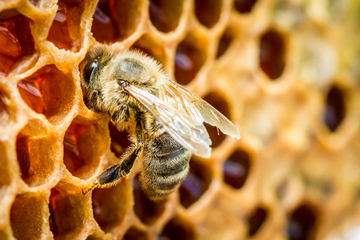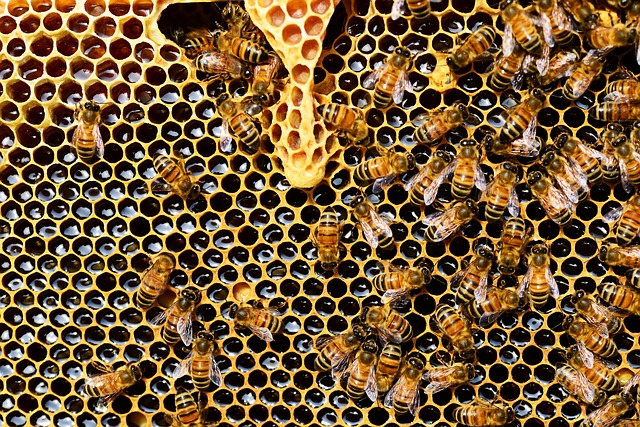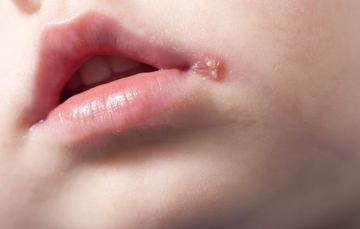HSV Research Receives Funding Boost
 A potential landmark moment in cold sore treatment research has arrived with news that the Medical Research Council has awarded scientists at the University of Surrey £500,000 to begin a new study into the herpes simplex virus.
A potential landmark moment in cold sore treatment research has arrived with news that the Medical Research Council has awarded scientists at the University of Surrey £500,000 to begin a new study into the herpes simplex virus.
The research team proposes to explore the role of the VHS protein in order to try and understand the role it plays in manipulating the body’s cellular environment in order to create conditions favourable for the survival of the cold sore virus. Early reports from the team, which is being led by Professor Gill Elliott, suggest that the protein has evolved to identify and eliminate particular parts of the cell that might otherwise impede the growth and spread of the cold sore virus.
Read more: HSV Research Receives Funding Boost
Cold Sore Treatment for the Runner
 If you are a regular runner, particularly if you are an all-weather or ultra-marathon runner, there is a strong chance that you know all about post-run cold sores. Furthermore, if you do suffer from post-run cold sores, chances are that they tend to be on or around the same spot each time you experience an outbreak.
If you are a regular runner, particularly if you are an all-weather or ultra-marathon runner, there is a strong chance that you know all about post-run cold sores. Furthermore, if you do suffer from post-run cold sores, chances are that they tend to be on or around the same spot each time you experience an outbreak.
Unfortunately, unlike painful muscles, the pain of a cold sore does not indicate any good and, unless you have a reliable cold sore treatment to speed you along your way to recover, it's likely that your cold sore blisters will take between a week and ten days to clear up.
During this time, however, you have to contend with pain, discomfort and worries about protecting those around you from contact with the virus. Remember, if you have a cold sore and are physically active, particularly in training sessions that involve skin-to-skin contact, your lesion could potentially cause an outbreak of herpes gladiatorum, a cold sore-related condition also know as “scrumpox” that is common among wrestlers, rugby players and other sports and sports clubs that involve bodily contact.
Read more: Cold Sore Treatment for the Runner
Why do Bees have Stripes?
 Scientists at Newcastle University have recently cast light on why bees have stripes, and it turns out that they are not just in the service of fashion.
Scientists at Newcastle University have recently cast light on why bees have stripes, and it turns out that they are not just in the service of fashion.
Casting praying mantises in the role of predators, the scientists, including lead author Candy Rowe, Professor of animal behaviour and cognition, tested the theory that fast-moving living creatures with stripes are difficult for predators to focus on, thereby increasing their chances of a successful escape.
A tiny cinema – how the study worked
The scientists used a novel approach to the study, constructing a tiny cinema for praying mantises in which they played footage that was designed to simulate the movement of bugs across a background similar to that which they might encounter in their natural habitat.
Read more: Why do Bees have Stripes?
Nursing Bees Suffer Sleep Deprivation
 Any human parent of young children will undoubtedly sympathise with the plight of babysitting bees who, as new research has revealed, are liable to suffer sleep deprivation when they are caring for their hive’s young.
Any human parent of young children will undoubtedly sympathise with the plight of babysitting bees who, as new research has revealed, are liable to suffer sleep deprivation when they are caring for their hive’s young.
The study was published in the journal Current Biology. However, it is interesting to note that in bee colonies the work of caring for the young is performed by so-called “nurse” bees who, as well as caring for the queen’s larvae, must also clean up the hive and help create propolis, the active ingredient in Herstat’s cold sore treatment.
Scientists at Hebrew University looked in-depth at the sleep patterns of brood-tending bumblebees and found that, like humans caring for newborns, they experience significant sleep disturbance when they are nursing bees at the larval and pupal stage of development. It is unclear exactly why they act so selflessly; however, the researchers speculated that it may be because the larvae and pupae emit certain chemicals which alter the nurse bees’ sleeping patterns.
Read more: Nursing Bees Suffer Sleep Deprivation
Cold Sores in Children – Unwelcome but Formative
 Like it or not, formative childhood experiences are comprised of both the good and the bad, and unfortunately into this latter category must go childhood illness. Whether it is a bout of chickenpox, a virus that gives a hallucinatory fever or repeated long afternoons in the school sanatorium, all of us will have memories of childhood ailments.
Like it or not, formative childhood experiences are comprised of both the good and the bad, and unfortunately into this latter category must go childhood illness. Whether it is a bout of chickenpox, a virus that gives a hallucinatory fever or repeated long afternoons in the school sanatorium, all of us will have memories of childhood ailments.
Which brings us to the cold sore virus; most people will be exposed to it between the ages of one and five and, for many of these, exposure will result in a cold sore outbreak. All children will react differently to the sudden appearance of discomfort and the formation of small blisters around their lips and mouth (or chin, cheeks or nose).
What can parents do?
Although a first-time cold sore outbreak is unlikely to cause serious complications, parents should definitely consult a doctor, particularly as cold sores can lead to HSV keratitis, the leading cause of blindness in the world.
Read more: Cold Sores in Children – Unwelcome but Formative
 A potential landmark moment in cold sore treatment research has arrived with news that the Medical Research Council has awarded scientists at the University of Surrey £500,000 to begin a new study into the herpes simplex virus.
A potential landmark moment in cold sore treatment research has arrived with news that the Medical Research Council has awarded scientists at the University of Surrey £500,000 to begin a new study into the herpes simplex virus.






 If you are a regular runner, particularly if you are an all-weather or ultra-marathon runner, there is a strong chance that you know all about post-run cold sores. Furthermore, if you do suffer from post-run cold sores, chances are that they tend to be on or around the same spot each time you experience an outbreak.
If you are a regular runner, particularly if you are an all-weather or ultra-marathon runner, there is a strong chance that you know all about post-run cold sores. Furthermore, if you do suffer from post-run cold sores, chances are that they tend to be on or around the same spot each time you experience an outbreak. Scientists at Newcastle University have recently cast light on why bees have stripes, and it turns out that they are not just in the service of fashion.
Scientists at Newcastle University have recently cast light on why bees have stripes, and it turns out that they are not just in the service of fashion. Any human parent of young children will undoubtedly sympathise with the plight of babysitting bees who, as new research has revealed, are liable to suffer sleep deprivation when they are caring for their hive’s young.
Any human parent of young children will undoubtedly sympathise with the plight of babysitting bees who, as new research has revealed, are liable to suffer sleep deprivation when they are caring for their hive’s young. Like it or not, formative childhood experiences are comprised of both the good and the bad, and unfortunately into this latter category must go childhood illness. Whether it is a bout of chickenpox, a virus that gives a hallucinatory fever or repeated long afternoons in the school sanatorium, all of us will have memories of childhood ailments.
Like it or not, formative childhood experiences are comprised of both the good and the bad, and unfortunately into this latter category must go childhood illness. Whether it is a bout of chickenpox, a virus that gives a hallucinatory fever or repeated long afternoons in the school sanatorium, all of us will have memories of childhood ailments.




